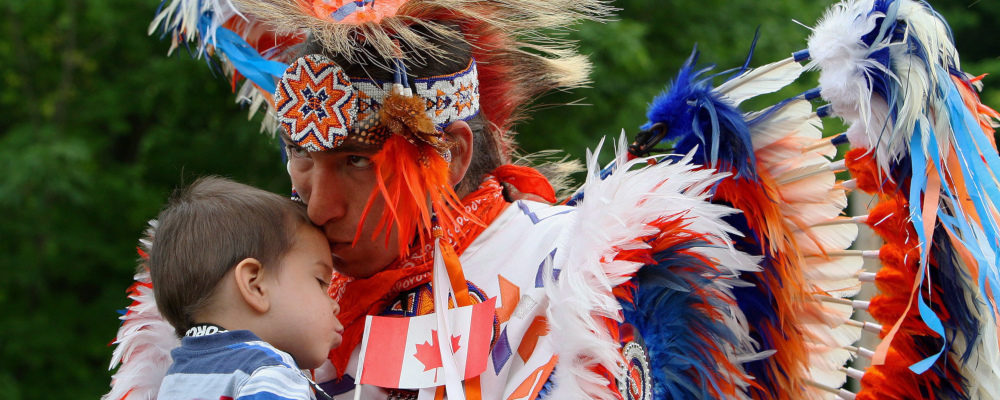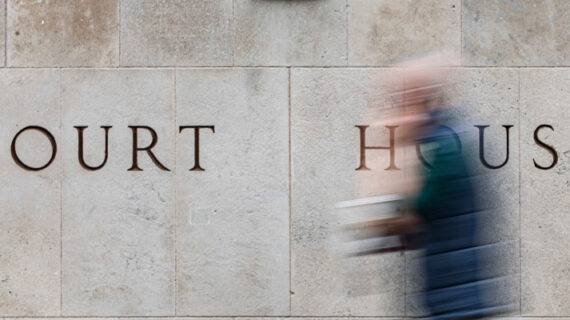After learning in greater detail about the experiences of Indigenous children who were forcibly removed from their families and placed in residential schools, and the impacts on them and their families, Canadians have spent the last year revisiting their own thoughts and feelings about this country’s true history and their individual role in advancing reconciliation.1Today we reflect on the dark realities that lead to reconciliation https://thehub.ca/2021-09-30/karen-restoule-today-we-reflect-on-the-dark-realities-that-lead-to-reconciliation/ Many people have been left with mixed emotions and a greater motivation to challenge their own long-held beliefs about Indigenous peoples and Canada, as a whole. As a result, there has been hesitation in deciding how to engage with key annual celebrations like National Indigenous Peoples Day and Canada Day. How do we celebrate the positive points of our relationship and reconcile the darker shades of our shared history?
Today, as we recognize National Indigenous Peoples Day, June 21, let’s go beyond celebrating the unique heritage and diverse cultures of Indigenous peoples. Let’s challenge our assumptions and commit to learning about the unique and outstanding contributions of Indigenous peoples in forming the strong foundational fabric of our country and be inspired by the principles of the original Indigenous-European relationships.
There is a commonly held stereotype that Indigenous peoples have always lived in small, secluded communities, never leaving their patch of land for anything. This couldn’t be further from fact. Prior to Indigenous-European contact, Indigenous peoples throughout these lands had expansive and established trade networks that gave way to the movement of goods and the people who moved them.
As Indigenous leader Manny Jules recounted to a crowd in 2008 in his role as Chief Commissioner of the First Nations Tax Commission: “There used to be millions of us. Although there were no population counts, best estimates suggest that there were at least 40 million of us in the Western Hemisphere in 1491. […] Market economies are not foreign to us. We created them ourselves. We traded goods over hundreds of miles. How could corn be used all throughout the Americas before contact, if we did not trade? How could pipestone end up in our territory before contact when it only comes from Pipestone, Minnesota, if we did not trade?”2First Nations Trade, Specialization, and Market Institutions: A Historical Survey of First Nation Market Culture https://ir.lib.uwo.ca/cgi/viewcontent.cgi?article=1372&context=aprci
Following contact, Indigenous Nations continued to have strong trade relations with European explorers as migration progressed. Research reveals that First Nations held all of the elements that are linked to a successful market culture in the periods prior to and immediately following contact, including specializations ranging from furs to wheat, iron to tobacco, and others.
Extensive trade networks continued to grow throughout the 16th century and over the course of the next 200-plus years as European colonies continued to expand into the New World. The French and the English formed alliances with Indigenous Nations in an effort to secure commercial interests, and these groups pushed through conflict and war.
Leading legal scholar John Borrows notes in his 2005 article, “Indigenous Legal Traditions in Canada”,3Indigenous Legal Traditions in Canada https://openscholarship.wustl.edu/cgi/viewcontent.cgi?article=1380&context=law_journal_law_policy that diplomacy was also factored into these trade relationships, whereby the legal customs, traditions, and cultural protocols of Indigenous Nations were observed and respected by European explorers and colonies. In the early 1700s, the French entered into Treaties with the Anishinabek of the Great Lakes by using Anishinabek forms, wampum belts, and ceremonies. European fur traders are said to have conducted commercial transactions in accordance with Indigenous traditions as well, by the giving of gifts, the extension of credit, and the standards of trade based on Indigenous legal principles. Marriages between Indigenous women and European men were conducted according to Indigenous legal traditions. The traces left behind by these interactions over hundreds of years following first contact continue to influence Canada’s fabric today, through symbols, historical celebrations, trade routes, harvesting traditions, traditional clothing apparel, and otherwise.
There was a fundamental shift in the mid-1700s when Britain, through the Treaty of Paris of 1763, ended 150-plus years of war.4First Nations in Canada https://www.rcaanc-cirnac.gc.ca/eng/1307460755710/1536862806124 This was quickly followed up by the issuance of the Royal Proclamation of 1763 which, among other points in relation to France and Spain, helped Britain to achieve certainty and stability with Indigenous Nations. It laid out specific protocols for all dealings with Indigenous Nations, making the Crown the primary point of contact between Indigenous Nations and all colonies. While the Royal Proclamation of 1763 aimed to control the western expansion of the colonies, it made clear the parameters on land and trade: only the Crown could purchase land from Indigenous Nations and no settlement or trade could be completed without the permission of the Indian Department.
The impacts of this legal instrument went beyond ending a war and establishing a fiduciary relationship, it extinguished a rich, mutually respectful, and mutually beneficial relationship that could have built off the early successes and led to a foundation for a different kind of country—a stronger, more collaborative, and more prosperous Canada.
Today, as we celebrate National Indigenous Peoples Day, and prepare for Canada Day celebrations next week, let’s consider the power of acknowledging the ugly and shiny parts of our shared history. Let’s be inspired by the successes of the original relationship between Indigenous peoples and Europeans that governed these lands for more than 200 years. Let’s commit to a better future, a Canada that is shaped by our foundational relationship of co-existence, collaboration, ambition, competitiveness, and great innovation.




